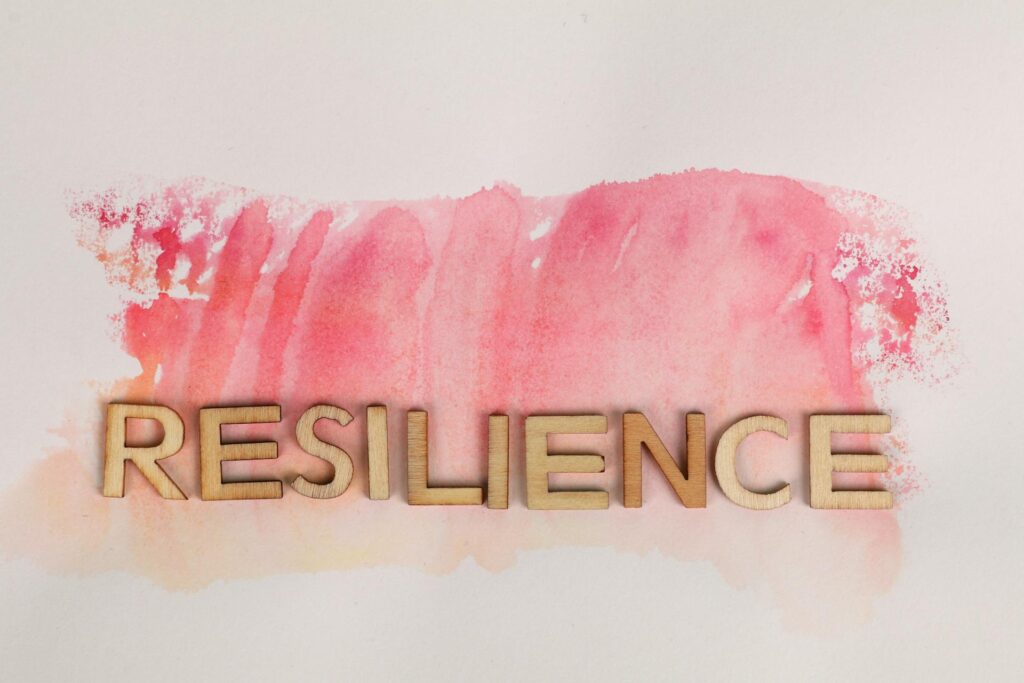Ever find yourself marveling at how some folks seem to bounce back from setbacks like they’re nothing more than a minor hiccup? That, my friends, is what we call resilience, and believe me when I say it’s not just a fancy buzzword—it’s a superpower we can all develop.
Today, I’m diving deep into the pillars of resilience, those rock-solid foundations that can help anyone stand strong in the face of adversity. Whether you’re someone who feels knocked down more than you’re standing, or just someone curious about personal growth, understanding these pillars of resilience can be a game-changer.
So, grab a cup of your favorite brew, and let’s embark on this journey together. Who knows? By the end of this, you might just find yourself a little more unshakeable than you were yesterday.

Understanding the Pillars of Resilience
At the core of every person’s ability to bounce back from setbacks lies a robust structure known as the pillars of resilience. These pillars aren’t just buzzwords; they are the essence of our capacity to withstand and grow from the difficulties we encounter. But what exactly are these pillars of resilience?
Simply put, pillars of resilience represent fundamental psychological qualities—self-awareness, optimism, mental flexibility, emotional regulation, empathy, strong relationships, and a sense of purpose—that, when developed, can significantly enhance our ability to navigate through life’s storms.
The importance of understanding and cultivating these pillars of resilience cannot be overstated. They are the bedrock upon which we build our ability to face challenges head-on, learn from them, and emerge stronger on the other side. In a world that often feels unpredictable and fraught with obstacles, developing these pillars of resilience is more than just a personal growth goal—it’s a necessity for thriving in the face of adversity.
Top Pillars of Resilience for Unlocking Strength
Understanding the pillars of resilience is crucial in unlocking our inner strength. These pillars are not just buzzwords but actionable insights that guide us through life’s challenges. By focusing on these foundational pillars of resilience, we can navigate adversity with grace and emerge stronger.
1. Self-Awareness: The Keystone of Resilience
Self-awareness is among the best critical pillars of resilience. It’s about knowing our strengths, weaknesses, and emotional triggers. Recognizing our vulnerabilities as strengths allows us to approach life’s challenges with clarity and confidence, laying the groundwork for resilient living.

Embracing Vulnerabilities as Strength
In the realm of self-awareness, recognizing and embracing our vulnerabilities is paramount. Vulnerability is often seen as a weakness, but it is actually a source of strength and authenticity. By acknowledging our fears, doubts, and limitations, we open the door to genuine growth and resilience. Here’s how embracing vulnerability transforms us:
- Foster Connection: Being open about our vulnerabilities allows us to connect more deeply with others, creating relationships built on trust and understanding.
- Enhance Emotional Intelligence: Recognizing our own vulnerabilities helps us develop empathy for others, deepening our emotional intelligence.
The Role of Self-Reflection in Building Resilience
Self-reflection is a powerful tool in the arsenal of resilience. It involves taking a step back to thoughtfully consider our experiences, behaviors, and emotions. Through self-reflection, we gain insights into our personal patterns and triggers, enabling us to make more informed decisions and adapt more effectively to life’s challenges. Implementing self-reflection involves:
- Regular Check-ins: Make it a habit to reflect on your day or week. What went well? What could have been better? How did you react to challenges?
- Journaling: Writing down your thoughts and feelings can be a therapeutic process that aids in self-discovery and resilience building.
2. Optimism: The Fuel for Resilience
Optimism serves as one of another powerful pillars of resilience, propelling us forward with hope and a positive outlook. It’s the ability to look past present challenges and anticipate a more hopeful horizon. Cultivating an optimistic mindset enables us to tackle challenges with a can-do attitude.
Cultivating a Positive Outlook
Optimism is about maintaining a hopeful and positive outlook on life, despite the ups and downs. It’s not about ignoring reality but choosing to focus on what can go right instead of what can go wrong. Cultivating a positive outlook involves:
- Gratitude Practice: Regularly acknowledging what you’re grateful for can shift your focus from negativity to positivity.
- Visualizing Success: Imagine overcoming your challenges and achieving your goals. This visualization encourages a positive mindset and resilience.

Realistic Optimism vs. Blind Positivity
While optimism is crucial for resilience, it’s important to distinguish between realistic optimism and blind positivity. Realistic optimism involves acknowledging the challenges and obstacles but believing in your ability to overcome them. Blind positivity, on the other hand, ignores problems and can lead to disappointment. Balancing optimism involves:
- Acknowledging Reality: Recognize the challenges you face without letting them overshadow your ability to find solutions.
- Preparation and Action: Use your optimism to fuel preparation and proactive action toward overcoming obstacles.
3. Mental Flexibility: The Art of Adapting and Perspective-Shifting
Mental flexibility is one of the essential pillars of resilience that emphasizes the importance of adaptability and open-mindedness. It’s about being able to pivot in the face of change and view challenges from various perspectives. This adaptability is key to overcoming obstacles and thriving in an ever-changing world.
Adapting to Change: Strategies for Mental Agility
In the fast-paced world we live in, change is the only constant. Embracing mental flexibility means developing the capacity to adapt to new situations without losing our ground. It’s about being open to change, whether it’s an unexpected shift in our personal lives, a sudden change at work, or even broader societal changes. To cultivate mental agility, consider these strategies:
- Embrace Lifelong Learning: Always look for opportunities to learn something new. This keeps your brain active and open to new ideas and ways of thinking.
- Practice Mindfulness: Being present in the moment allows you to adapt to change more readily. Mindfulness practices help you observe your thoughts and feelings without judgment, making it easier to accept new situations.
- Seek New Experiences: Regularly venture beyond the familiar boundaries of your comfort zone. Trying new things can help you become more adaptable and open-minded.

The Power of Perspective-Shifting
Seeing things from a different perspective is a powerful tool for mental flexibility. It’s about understanding that there are multiple ways to view a situation, and sometimes, the way out of a problem is to change how we look at it. Here’s how you can practice perspective-shifting:
- Question Your Assumptions: Challenge the beliefs and assumptions you have about how things should be. This can open up new possibilities you hadn’t considered.
- Seek Diverse Opinions: Talk to people who see the world differently than you do. This can help you see things from new angles and expand your understanding.
4. Emotional Regulation: Mastering Your Inner World
Mastering emotional regulation, a key among the pillars of resilience, involves understanding and managing your feelings to respond to stress in healthy ways. It’s about recognizing when you’re becoming overwhelmed and having strategies, like deep breathing or mindfulness, to calm down. This self-mastery helps you face challenges with clarity and poise, reinforcing your resilience.
Techniques for Managing Emotional Responses
Emotional regulation is about being able to manage and respond to your emotions in a way that’s constructive, rather than being overwhelmed by them. To assist in managing your emotional responses, consider the following methods:
- Deep Breathing: In moments of intense stress, practice taking several slow, deep inhalations. This simple technique can calm your nervous system and help you think more clearly.
- Journaling: Writing down your thoughts and feelings can provide an outlet for expressing emotions, helping you to process and manage them more effectively.

The Importance of Emotional Intelligence in Resilience
Emotional intelligence (EQ) is the ability to understand and manage your own emotions and the emotions of others. It’s a crucial component of emotional regulation and resilience. High EQ helps you navigate social complexities with ease, lead by example, and maintain positive relationships even in difficult times. Developing your EQ involves:
- Self-awareness: Paying attention to your emotions and recognizing their impact on your thoughts and actions.
- Empathy: Understanding and sharing the feelings of others, which strengthens connections and supports resilient communities.
5. Empathy: Fostering Deep Connections
Empathy, a cornerstone among the pillars of resilience, is about truly stepping into someone else’s shoes. It bridges gaps between people, fostering deep, meaningful connections. By practicing empathy, you not only support others but also build a support network for yourself, making it easier to weather life’s storms together.
Strengthening Connections Through Understanding
Empathy goes beyond mere sympathy; it’s about truly understanding and sharing the feelings of another. This act serves as a vital link, uniting people and nurturing more meaningful, significant connections. To strengthen connections through empathy, practice active listening and put yourself in others’ shoes. This can enhance your ability to offer support and build a network of mutual care and understanding.
Empathy as a Tool for Resilient Leadership
In leadership, empathy is transformative. It enables leaders to connect with their teams on a deeper level, building trust and fostering a sense of belonging. Empathetic leaders are adept at navigating conflict, inspiring collaboration, and driving positive change. By showing genuine concern for the well-being of their teams, leaders can cultivate a resilient organizational culture that thrives in the face of challenges.
6. Strong Relationships: The Fabric of Resilience
At the heart of the pillars of resilience, strong relationships stand as a testament to the power of connection. These bonds, woven from threads of trust, support, and mutual understanding, form a safety net that catches us when we fall. Cultivating such relationships means investing time and emotional energy into those around us, ensuring we both give and receive the support needed to navigate life’s challenges.
Building a Supportive Network
In the tapestry of life, strong relationships are the threads that hold us together, especially during tough times. A supportive network isn’t just about having people around us; it’s about cultivating connections that offer mutual support, understanding, and encouragement. Here’s how to weave these vital threads:

- Be Proactive in Your Relationships: Reach out, engage, and invest time in building relationships. It’s about quality, not quantity.
- Offer Support: Just as you seek support, be there for others. It’s a two-way street where giving and receiving help strengthens the bonds between individuals.
- Join Communities: Whether it’s a hobby group, a professional network, or a social cause, being part of a community can provide a sense of belonging and additional layers of support.
The Role of Trust and Communication
At the heart of strong relationships lie trust and communication. Trust builds the foundation on which resilient relationships are built, allowing for vulnerability and genuine connection. Effective communication, on the other hand, ensures misunderstandings are minimized, and everyone feels heard and valued. Enhancing these aspects involves:
- Practice Active Listening: Show genuine interest in others’ thoughts and feelings. It’s not just about hearing but understanding.
- Be Open and Honest: Share your thoughts and feelings openly. Honesty fosters trust and deepens relationships.
- Resolve Conflicts Constructively: Conflicts are inevitable, but resolving them through respectful communication and empathy strengthens relationships.
7. Purpose: The Guiding Light of Resilience
Purpose propels us forward, serving as a compass in our quest for resilience. Among the pillars of resilience, it illuminates our path, guiding us through dark times with the promise of brighter days ahead. Finding our purpose involves introspection and alignment with our core values, driving us to pursue goals that resonate with our deepest selves.
Finding Meaning in Challenges
Facing challenges can be daunting, but when viewed through the lens of purpose, they transform into opportunities for growth and learning. Finding meaning in adversity is a powerful aspect of resilience. It involves:
- Reflect on Your Experiences: Take the time to ponder the challenges you’ve faced and what they’ve taught you. This reflection can uncover hidden insights and meanings.
- Connect Challenges to Your Larger Goals: See obstacles not as barriers but as stepping stones towards your greater objectives in life.

The Motivating Power of Personal Values and Goals
Purpose is the compass that guides us through life’s storms, powered by our deepest values and goals. When our actions are aligned with our personal values, we move through life with a sense of direction and motivation, even in the face of adversity. Cultivating this sense of purpose involves:
- Identify Your Core Values: What matters most to you? Understanding your values helps clarify your purpose.
- Set Goals Aligned with Your Values: Goals give you something to strive for and keep you motivated. Ensure they resonate with your personal values to enhance your sense of purpose.
Conclusion
Embracing the pillars of resilience equips you with the strength to navigate life’s storms and emerge stronger. These foundational principles are your guide to personal empowerment and unwavering perseverance. Don’t wait for the next challenge to test your limits. Begin today to fortify your resilience, cultivate a robust mindset, and unlock your full potential. Take the first step now and transform adversity into opportunity. Start building your resilient future today!





